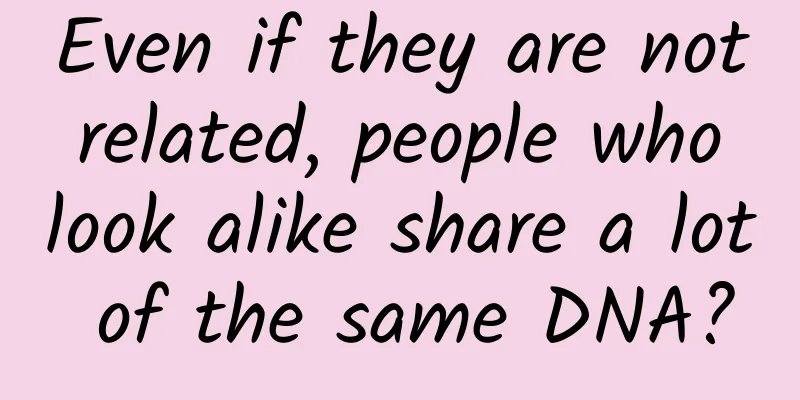Why do humans have to wipe their butts, but animals don't?

|
One day, you rushed to the bathroom and suddenly realized that you forgot to bring toilet paper. As you were desperate, your cat walked into the bathroom gracefully with a mocking look on his face. You squat on the toilet, feeling the coolness of your butt and feeling indignant: Why do humans have to wipe their butts after they poop, but animals don’t? Wiping your butt, the price of walking upright The first thing that needs to be corrected is that animals don’t completely refuse to wipe their butts. Take your cat for example, it spends 10% of its life “cleaning” itself. Its tongue is covered with numerous papillae, and when a cat licks its body, they act like a small comb to comb out dirt and parasites[1][2]. Cats have many small barbs on their tongues to help them clean their bodies / Pexels As for why humans need to wipe their butts, it may be traced back to millions of years ago when our ancestors began to learn to walk on two legs, achieving the transformation from "ape to man." Walking upright freed humans’ hands, allowing them to gain stronger survival capabilities and the possibility of reproducing in a wider range of areas[3]. However, this gift from fate had already been secretly priced. Since the spine becomes the load-bearing device for the head, upper limbs and torso, it is squeezed for a long time, which can easily damage your lumbar discs and cause back pain. At the same time, your lower limbs also bear more pressure, causing you to suffer from foot pain and knee injuries[4]. Walking upright is considered one of the signs of the emergence of humans / Tuchong Creative Similarly, the problem of pooping has become one of the costs of walking upright. In order to maintain body stability and prevent falling forward, humans developed strong gluteus maximus muscles that wrap around the buttocks. The anus, located in the midline of the buttocks, is hidden, so that when defecating, excrement is more likely to remain in the buttocks[5][6]. Long-term dirt residue, coupled with a relatively closed environment, provides a breeding ground for bacteria, which can easily cause anorectal diseases such as anal itching, anal eczema, and even hemorrhoids[7]. Therefore, you really need to wipe your butt for health reasons. In fact, the importance of anal cleaning is no less important than washing your face. In contrast, animals that walk on four legs do not have this problem. Because their torsos and legs are at an angle, their buttocks are at the corner[6] and their anuses are clearly visible, so they can defecate cleanly and conveniently, and they can also ventilate after defecation. But we have to admit that walking upright does give us flexible hands, making it easy for us to use tools to wipe our butts. Feces is their treasure. In addition, another reason why humans need to wipe their butts is that as a higher organism, humans no longer have any special needs for feces. For some animals, these excrement may be the "treasure" they rely on for survival. For example, when a hippopotamus defecates, it shakes its tail rapidly to spread the feces in all directions to protect its territory[8]. Some small and medium-sized herbivorous mammals treat "feces" as "daily food". Take rabbits for example, they will excrete soft feces during the day and quickly swallow these excrements through their anus, and then excrete harder feces again at night. Since the soft feces are swallowed by rabbits, what you usually see are hard feces of rabbits. For rabbits, eating their own soft feces can help them get more nutrients. Data show that the crude protein content in rabbit soft feces is 230-335g/kg, which can provide 15%-22% of the daily protein intake. In addition, the protein in soft stools is also rich in essential amino acids. Rabbits can obtain 83% niacin, 100% riboflavin, 165% pantothenic acid and 42% vitamin B12 from soft stools. Coprophagia is a unique digestive strategy for rabbits / Pexels Eating feces can also reduce hunger when food is scarce. This is especially true for rabbits living in the wild, where it can prolong their lives by up to a week if they are deprived of food and water[9]. In contrast, as humans, we no longer need to use feces to mark territory, and it has become easy to obtain food and nutrition. Eating four or five meals a day, milk tea, barbecue and hot pot have become standard for many people. Toilet paper, the savior of mankind It can be said that feces has become a symbol of uselessness and even filthiness for humans. American scholars believe that the aversion to feces may reflect an intuition that humans have about microorganisms, and this intuition reduces the probability of us ingesting pathogenic microorganisms[10]. But before toilet paper was invented, people racked their brains to remove this filth. Due to different customs and climatic environments, people used various natural materials for wiping, such as stones, shells, animal fur, etc. [11]. In the ancient Roman period, people also invented a tool similar to a toilet brush to wipe their buttocks. This tool consisted of a stick and a sponge soaked in vinegar or salt water[11]. After each use, it was washed with water and then placed in a vinegar bucket for disinfection, making it reusable[12]. In ancient Rome, public toilets were made of stone or marble slabs / Tuchong Creative China actually used toilet paper much earlier than the West. In the early 14th century, Zhejiang Province alone produced 1 million bundles of toilet paper each year[13]. In contrast, Western countries did not have the first modern commercial toilet paper until 1857.[14] This toilet paper was made of Manila hemp and was in a sheet structure.[15] Because it was soaked in aloe vera, the toilet paper became softer and its inventor, Joseph C. Gaity, even claimed that it could effectively prevent hemorrhoids. As for the toilet paper roll we are familiar with, it was not mass-produced in the United States until 1890.[12] The toilet paper roll was first patented in 1871 and mass production began in 1890. / Hagley Museum & Library Today, toilet paper has evolved into a variety of raw materials such as cotton pulp, wood pulp, straw pulp and waste paper pulp[16]. It has become an indispensable and even vital part of our lives. Statistics show that in 2018, an American used an average of 141 rolls of toilet paper per year, while the average Chinese person used 49 rolls per year, weighing 4.4 kilograms[17]. No one can imagine what the world would be like without toilet paper. [1] Bradshaw, JW (2012). The behavior of the domestic cat. Cabi. [2] Eckstein, RA, & Hart, BL (2000). The organization and control of grooming in cats. Applied Animal Behavior Science, 68(2), 131-140. [3] Gao Lihong. (2018). The manifestation and origin hypothesis of upright walking in early humans. Biology Teaching (02), 71-72. [4] Modern Express. (2010). Humans are a typical example of evolutionary failure. What will we look like in 500 million years? [5] Jennifer Ackerman & Carly Walinsky. (2006). It’s all because of walking upright. Chinese Geography (07), 152-171. [6] Massive Science. (2020). How did human butts evolve to look that way? [7] Sichuan Provincial Health Commission. (2021). Why do doctors say “washing your butt” is more important than “washing your face”? [8] CCTV.com. (2017). A unique way of enclosing land: hippos spread feces to protect their territory. [9] Chen Guiyin, Zhou Tao. (2004). Rabbit coprophagy and its research progress. Chinese Rabbit Breeding (02). [10] BBC. (2015). Why do we hate poop so much? [11] Charlier, P., Brun, L., Prêtre, C., & Huynh-Charlier, I. (2012). Toilet hygiene in the classical era. BMJ, 345. [12] Yangcheng Evening News. (2020). Interesting cultural history: Do you know toilet paper? [13] Smyth, R. (2012). Bum fodder: an absorbing history of toilet paper. Souvenir Press. [14] National Graphic. (2020). What did people do before toilet paper? [15] CNN. (2009). Why toilet paper belongs to America? [16] China Business News. (2021). “Pulp” Lake is in crisis! What does the soaring paper price mean? [17] Statista. (2018). The US Leads the World in Toilet Paper Consumption. |
>>: Spring is here, and rhinitis is here! How to deal with annoying allergic rhinitis?
Recommend
The latest strategy for 2015: How to build Android third-party channels with zero budget?
Introduction: As we all know, domestic Android ch...
Fortunately, there are still Mogao Grottoes in the world
Dunhuang Mogao Grottoes It should be ignored Beca...
Android touch events (notes)
There are not many articles with similar titles o...
Wuchang SEO Training: Balanced web design can avoid being penalized for excessive keyword density
Web information is one of the direct ways that we...
Why are the conversion rates of information flow accounts so poor?
Yesterday, I received a message like this in the ...
Will Motorola Razr be folded just for the sake of folding?
At the end of last year, Lenovo released the Moto...
AiKop | See the 72 changes of modern ships
Do you know the origin of the name "cruise s...
How to fine-tune the operation of private domain traffic in the education and training industry?
Recently, experts in the education and training i...
Return to the Deep Blue: Whales are mammals, so how can they swim in the ocean like fish?
Overview Unlike fish, whales are secondary aquati...
2022 Qingming Festival Tomb Sweeping Notice: Can I sweep the tombs on site? What are the specific regulations?
In half a month it will be Qingming Festival. Dur...
Stock Broker Training Camp: Only Know How to Trade Stocks Episode 18
Stock Brother Training Camp: Only Know How to Tra...
Torchbearers at the Paralympics and their robotic arms and legs
On the last day of the Beijing Winter Paralympic ...
Weekly crooked review: BAT Three Kingdoms chaos, you need me as Zhuge Liang
As the saying goes, the world will eventually uni...
Fed up with the speed of updates, Google may take back control of Android
Google is about to take back the leading role in ...
Can palm lines be used to diagnose high blood pressure? Will frequent use of antihypertensive drugs make blood vessels fragile? Don't believe these rumors
Hypertension is a common chronic disease and is k...









